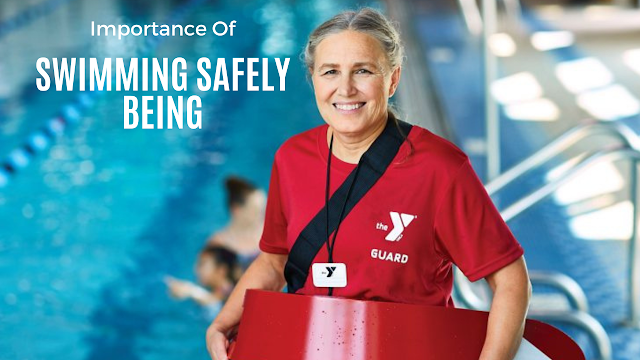Control human factors
Objectively assess the technical level and the degree of physical and psychological preparation of the swimmers that make up the training group. Are you an objective parent when assessing these aspects in your own children? In my opinion, it is advisable to also take into account the opinion of third parties with experience and knowledge in open water swimming safely being. Good advice in this regard is for others to assess your children more objectively and impartially on whether they meet the minimum safety requirements for swimming safely being in open water.
Then, the starting point is to assess the potentials and weaknesses of your children, not so much their age but their experience in swimming safely being in open water to adapt the activity to be carried out in the water. The logical thing in the event that you have children who swimming with lifeguard license in the pool is to have made some first contact with them in controlled and safe environments such as beaches, or supervised reservoirs, first by making short trips close to the shore. Then, progress both in the duration of the routes and in the distances to be covered and, finally, progress in technical difficulty. One recommendation in this regard is the so-called "participation requirement" that guarantees the safety of swimmers by being able to verify their previous experiences.
Teach and train orientation in open water with your children from the first day and requires the premise that they always maintain eye contact with you. The visual control of each and every one of the members of the group at all times must be reciprocal, see and always be seen by the rest of the swimmers. That each one takes responsibility for the other works very well in the case of pairs, always trying to swim with eye contact from another partner, for which it is ideal to swimming safely being parallel or at the feet of the most advanced.
Teach self-rescue and rescue
Behaviors because they are an added value in open water safety. Train the physical condition and the different abilities and skills in the water because the better the physical condition and the greater the aquatic domain, the lower the risk.
Make sure you know how to provide first aid and perform water rescue techniques and that your children also know how to do them, because in the event of an accident you will be the first responder or, if something happens to you, they will be.
When we talk about prevention, even if all possible safety measures have been taken, primary prevention does not guarantee the absence of accidents. Therefore, we must also take secondary prevention into account, knowing what to do in the event of an accident.
This level of prevention is related to the need to know the action protocols related to the towing and extraction of a victim from the water, assessment of their level of consciousness, knowing how to check if they are breathing or not, knowing how to place them in PLS (safety lateral position) if you are breathing but not conscious, or know how to perform first aid.
In this sense, prompt communication with 112 to report the accident is a crucial aspect in the event that medical intervention is needed. The possibility of having a mobile phone in a nearby boat or even being able to transport it inside the watertight safety buoy is of great help.
Once you have assessed the human factors, also analyze the environmental risks and the state of the materials that you are going to use . Make an effort to put all the measures in your hands to control them as much as possible and never forget that to prevent accidents it will always be better to put as many security measures as possible.
PREVENTION
“Not only is it enough to be a good swimming of lifeguard requirements safely being, we must also have the knowledge and aquatic skills to help another person who suffers an accident in the water.”
If the water is cool or you are going to be in the water for a long time, put on the wetsuit. If you are going to swim in waters where there is the possibility of accidental contact with objects, flora or local fauna, always use the wetsuit. Not only because the neoprene will allow you to isolate yourself from cold water and protect you from rubbing against objects or jellyfish stings, for example, but also because the increased buoyancy it provides is in itself an extra safety measure.
If you have a support boat such as a kayak or a paddle surf board (SUP) that can serve as a guide, provide logistical support or simply as an extra security measure, it is highly recommended.
The more security measures we adopt, the greater the prevention of accidents and the lower the probability of suffering them.
Wearing brightly colored hats and safety buoys facilitates the monitoring and visual control of all members, as well as being easily spotted by rescue personnel.
Also read about: Start swimming in the sea: newbie tips.



0 Comments